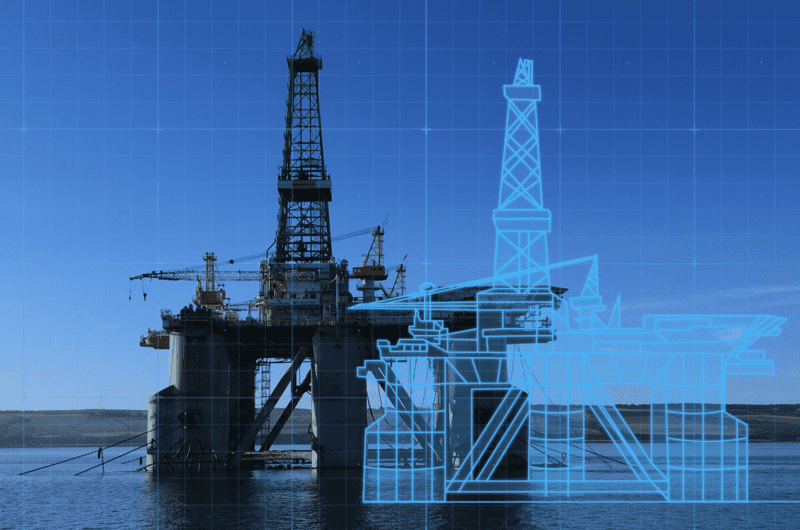In the ever-evolving landscape of Industry 5.0, one technology has emerged as a beacon of innovation and efficiency in the oil and gas sector: digital twins. Digital twins, real-time virtual representations of physical objects, processes, or services, have arrived and are increasingly used to optimize and drive efficiencies in manufacturing production. Now, we are seeing this advanced technology quickly become a mainstay in oil and gas operations, where digital twins are proving to be transformative, offering a path to maximizing operations while minimizing capital and operational expenditures.
Forecasters warn that 2024 could be a challenging year in the oil markets. The U.S. Energy Information Administration recently predicted that gasoline consumption in the United States would decline next year, noting reduced commuting, more efficient vehicle engines, and growing numbers of electric cars. With expectations of lower consumption patterns and retail prices, oil and gas companies must focus on operational efficiency. Digital Twins equip oil and gas companies with the insights to make more informed decisions about their operations and processes to align with changing market dynamics.
Digital Twins in Oil and Gas Operations: A Game-Changer
The oil and gas sector is fraught with complexities. Everyday uncertainties, such as rising and diminishing consumer demand, price fluctuations, and geopolitical issues, hold surprises and risks for companies in the sector. Managing assets, predicting equipment failures, and optimizing production processes—are all common challenges that have been part and parcel of the industry for decades. Enter digital twins, real-time virtual replicas of physical assets and processes, ushering in a new era of efficiency and cost-effectiveness in the oil and gas industry.
Digital Twins enable operators to identify potential bottlenecks, inefficient processes, and equipment failures before they occur in the physical operation. This not only reduces operational costs but also enhances revenue streams. Here’s how.
Asset Management and Real-Time Monitoring
Having virtual replicas of physical assets, such as oil rigs, pipelines, and refineries, enables oil and gas companies to gain unprecedented insights into their assets and operations.
Digital Twin’s new-age analytical processes fill that void by predicting system anomalies and automating maintenance requests or alerts for immediate corrective actions, translating directly into increased productivity and higher revenues. Deloitte predicts that predictive maintenance can reduce maintenance costs by up to 40%, improve equipment uptime by 10-20%, and reduce breakdowns by up to 75%.
Sensors placed on critical components can continuously collect data, which is then fed into the digital twin model. This data can be analyzed to detect abnormalities or potential equipment failures before they lead to costly breakdowns or accidents. This capability is especially valuable in complex offshore environments where traditional monitoring methods may be limited.
Simulating Success for New System Design and Process Optimization
Digital Twins are not just about predicting and preventing issues; they also play a crucial role in designing new systems and optimizing the use of oil and gas resources. Process inefficiency can translate into significant financial losses in the oil and gas industry. Research shows that the cost of an hour’s downtime in the oil and gas industry has more than doubled from 2000 to 2022 to almost $500,000. This is where digital twins shine—by providing a virtual sandbox for operators to test new systems and optimize their processes with minimal risk and downtime.
Digital Twins allow operators to design and continuously improve operational processes and workflows in a virtual environment to maximize efficiency, increase productivity, reduce waste and costs, and improve overall operating performance. This optimization applies to all stages of the oil and gas value chain, including exploration, drilling, production, refining, transportation, and distribution. For example, digital twins can analyze the performance and health of rotating equipment such as pumps, compressors, and turbines to ensure these critical components are working optimally while providing a better line of sight into potential safety and quality control issues. Process optimization with new and existing systems is essential for maintaining competitiveness, especially in a dynamic and challenging global energy landscape.
The Bottom Line: Digital Twins in the Future of Oil and Gas
As we navigate the future of Industry 5.0, the role of digital twins in oil and gas becomes increasingly prominent. These dynamic virtual entities are not just tools but catalysts for innovation and revenues across the industry.
The knowledge and insights gained from using digital twins are invaluable. They empower operators to make data-driven decisions, optimize processes, and ultimately boost revenues. In an industry where the margin for error is slim, the ability to simulate, analyze, and predict with precision is a game-changer. Digital twins have become essential in the oil and gas sector, allowing companies to stay competitive in an ever-evolving and challenging industry landscape.







